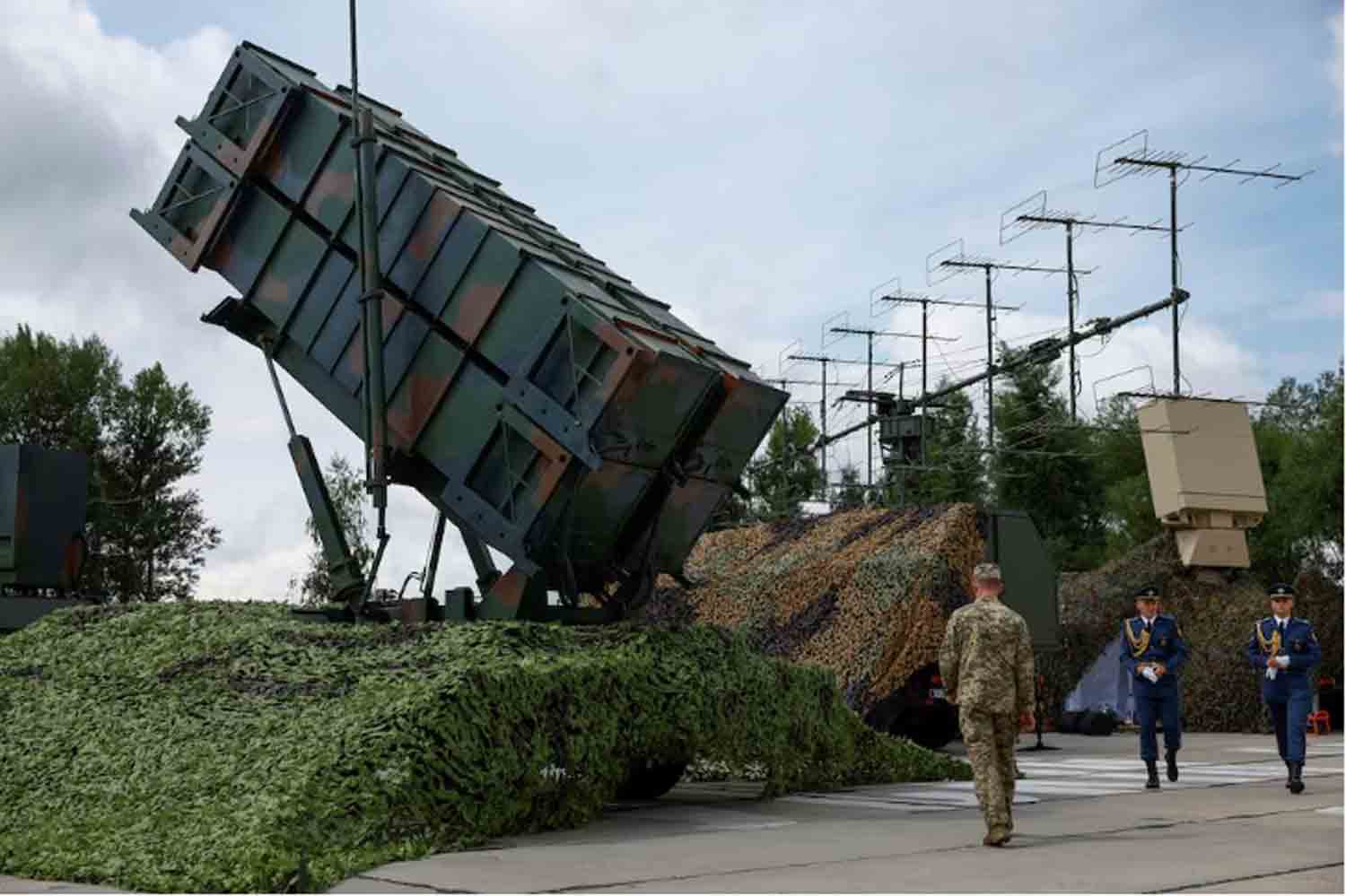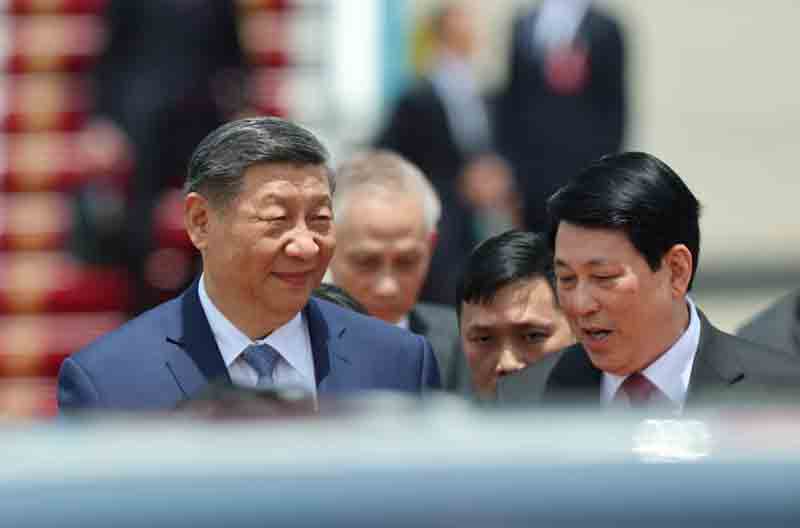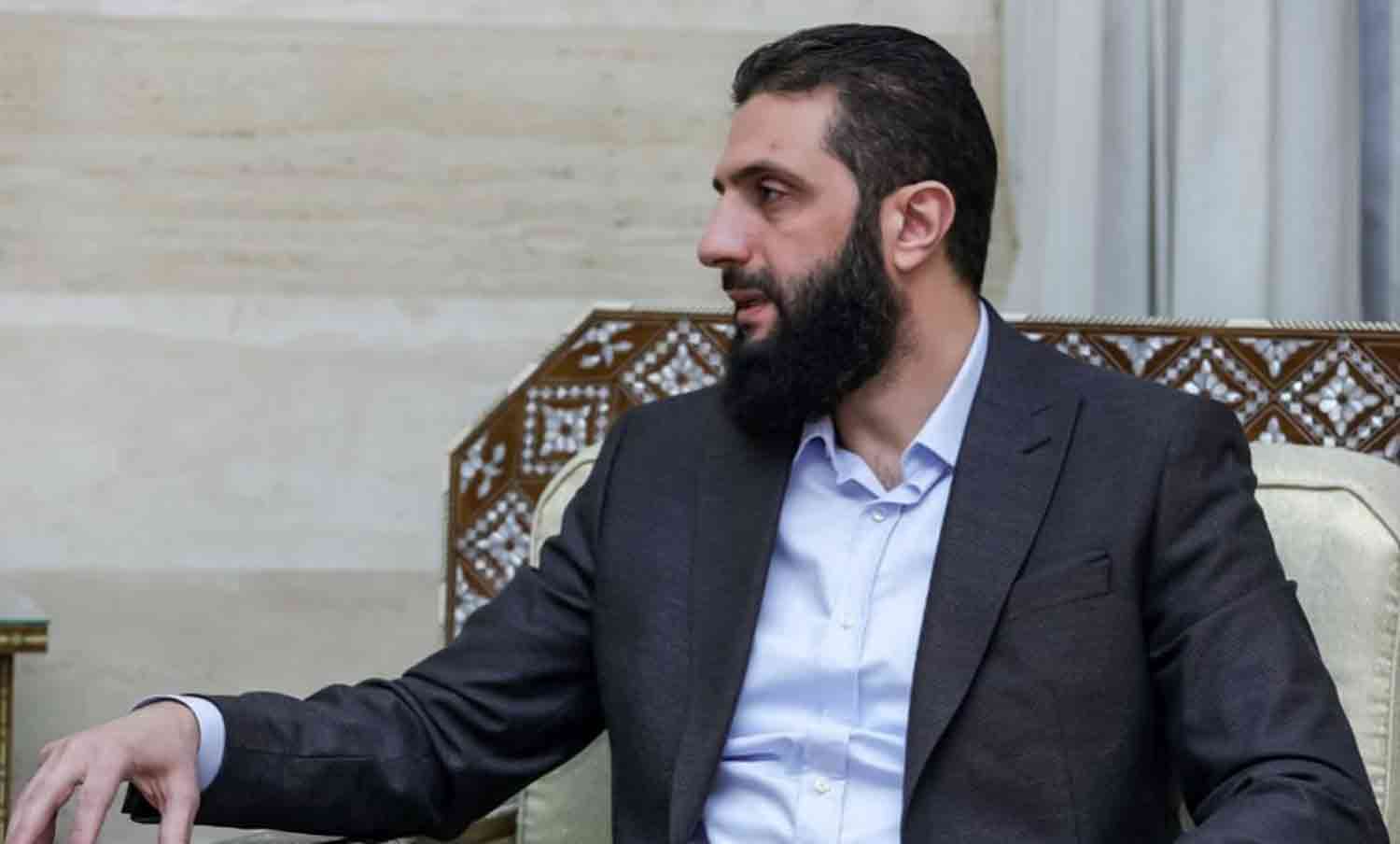Ukrainian President Volodymyr Zelensky has indicated that Ukraine is prepared to acquire 10 Patriot air defense systems from the United States for $15 billion, highlighting the nation’s pressing need to enhance its defense capabilities amid ongoing hostilities.
This announcement, initially shared on X by Clash Report and later confirmed by outlets like Euromaidan Press, comes as Ukraine continues to confront persistent aerial threats. The news has ignited conversations regarding the practicality of such a transaction, the strategic ramifications for both countries, and the evolving landscape of air defense in contemporary warfare.
Although Washington has reportedly opted not to sell the systems outright, this proposal underscores the intricate nature of military assistance and procurement during wartime.
The Patriot system, officially known as the Phased Array Tracking Radar for Intercept on Target, represents a fundamental component of American air defense technology. Developed by Raytheon Technologies (now RTX Corporation), it is engineered to address a variety of aerial threats, including tactical ballistic missiles, cruise missiles, and advanced aircraft.
Typically, each Patriot battery comprises a phased-array radar (either AN/MPQ-53 or -65), a command-and-control center (AN/MSQ-104), up to eight launchers with four missiles each, and a power generation unit. The system’s most sophisticated interceptors, the PAC-3 (Patriot Advanced Capability-3), utilize hit-to-kill technology, directly engaging targets at distances of up to 35 kilometers for ballistic missiles and 100 kilometers for aircraft.
A single battery, which costs around $1 billion, necessitates approximately 90 personnel for operation, with additional expenses for missiles—each PAC-3 interceptor is priced at about $4 million. The acquisition of ten systems, as proposed by Zelensky, would require not only a substantial financial investment but also significant infrastructure, training, and logistical support.
Ukraine’s interest in the Patriot missile system is driven by its demonstrated effectiveness. Since its first use in the 1991 Gulf War, where it successfully intercepted Iraqi Scud missiles, the system has seen substantial enhancements.
In Ukraine, the Patriot systems have been recognized for their success in intercepting Russian Kinzhal hypersonic missiles, highlighting their importance in addressing contemporary threats. The system’s radar is capable of tracking up to 100 targets at once, providing a 360-degree coverage area of approximately 150 kilometers, depending on the terrain.
For a nation the size of Ukraine, deploying 10 Patriot systems could theoretically safeguard major cities such as Kyiv, Odesa, or Lviv; however, a comprehensive defense of the entire country would necessitate a significantly larger number. When compared to alternatives like the Soviet-era S-300, which Ukraine continues to use, the Patriot system offers enhanced accuracy and better compatibility with NATO systems.
Nonetheless, it does not possess the same level of mobility as newer systems like Israel’s David’s Sling or Russia’s S-400, which can be redeployed more quickly but have their own challenges in countering low-flying drones.
The financial implications of President Zelensky’s proposal raise urgent concerns. The World Bank estimated Ukraine’s GDP for 2024 at $179 billion, making a $15 billion acquisition—almost 8% of its economy—a considerable strain.
According to a report by Euromaidan Press on April 10, 2025, Zelensky indicated a willingness to allocate between $30 billion and $50 billion for a more extensive U.S. defense package, suggesting potential flexibility in funding through loans or international assistance.
Since Russia’s invasion in 2022, the United States has allocated more than $83 billion in military support, contributing to a total aid package of $120 billion by early 2025, as reported by the Center for Strategic and International Studies.
A significant portion of this assistance has come in the form of grants or withdrawals from U.S. stockpiles rather than direct sales. A transaction of this scale would likely necessitate Congressional approval and could include offsets, such as future revenues from Ukrainian minerals, a subject that has been part of recent discussions between the U.S. and Ukraine.
From a logistical standpoint, supplying 10 Patriot systems poses significant challenges. Raytheon’s production capabilities are limited, with only a small number of batteries produced each year. A 2023 agreement with Japan and other partners for 1,000 PAC-3 interceptors, valued at $5.5 billion, highlights the lengthy lead times, with deliveries expected to extend through 2027.
The Patriots that Ukraine received in 2023 took several months to become operational due to the necessary training. Expanding to 10 systems would require hundreds of trained personnel for operation and maintenance, along with a consistent supply of interceptors, all while Russia continues to target Ukrainian infrastructure.
The U.S. Army, which operates 16 Patriot battalions worldwide, would be hesitant to reallocate systems from its own inventory or from allies such as Poland, which has two batteries, or Saudi Arabia, a key operator with ten.
Washington’s reported decision not to sell, as indicated by various sources, reflects a strategic approach. The U.S. has chosen to prioritize aid over sales to retain the ability to support Ukraine while safeguarding its own defense capabilities. Other allies, such as Germany and Romania, have either provided or committed to supplying Patriot systems, yet the global demand continues to exceed the available supply.
For example, Poland currently operates two Patriot batteries but is seeking additional units to address Russian threats along NATO’s eastern border. Both the Biden and Trump administrations have encountered domestic pressure to find a balance between supporting Ukraine and addressing national security concerns. A report from CSIS in 2025 anticipated that U.S. deliveries to Ukraine could increase to $920 million per month, although political changes may influence this forecast.
From a geopolitical perspective, the proposal holds significance beyond mere financial considerations and equipment. Ukraine’s interest in acquiring Patriot systems indicates a move towards greater long-term self-sufficiency, diminishing reliance on sporadic aid. President Zelensky’s remarks, as noted on the official Ukrainian presidential website on April 13, 2025, highlight this intention: “We are prepared to buy these additional systems.”
However, Russia is likely to respond aggressively. Moscow has already modified its strategies, employing low-cost drones like the Shahed-136 to overwhelm Ukrainian defenses. The S-400, which is Russia’s closest counterpart to the Patriot, has a longer range—up to 400 kilometers with specific missiles—but faces challenges against low-altitude threats. A Ukrainian enhancement of Patriot systems could lead Russia to escalate its use of drone swarms or increase the deployment of Iskander ballistic missiles, testing the limits of the defense system.
Historically, air defense has played a crucial role in shaping military conflicts. During the Cold War, the U.S. relied on systems such as the Nike Hercules, while the Soviets deployed the SA-2, which famously shot down a U-2 spy plane in 1960. Today, the Patriot’s involvement in Ukraine is reminiscent of the Stinger missile’s impact in Afghanistan during the 1980s, which shifted the balance against Soviet air superiority.
Modern warfare necessitates a multi-layered defense strategy. Ukraine’s combination of NASAMS, IRIS-T, and S-300 systems offers some level of protection, but vulnerabilities persist against Russia’s varied weaponry. European options, such as the Franco-Italian SAMP/T, provide mobility but do not match the missile interception capabilities of the Patriot system. Meanwhile, Israel’s Arrow system, which is tailored for exo-atmospheric interceptions, is overly specialized for Ukraine’s requirements.
In a broader perspective, there is a global competition for air defense dominance. China’s HQ-9, boasting a range of 200 kilometers, and India’s acquisition of the S-400 demonstrate how countries are preparing for missile threats.
Ukraine’s situation has accelerated this trend, highlighting that no single defense system can address all challenges. Drones, which can be procured for as little as $20,000, have the potential to overwhelm interceptors that cost millions, a phenomenon evident in the Houthi assaults on Saudi Arabia.
The U.S. Navy’s Aegis system, utilized on destroyers and incorporating the Patriot’s PAC-3 technology, is not suitable for land-based defense in Ukraine. Meanwhile, emerging laser defense systems, such as Israel’s Iron Beam, offer promising cost-effective alternatives but are still years away from operational readiness.
Public opinion in the U.S. adds complexity to the situation. A Pew Research poll from 2024 indicated that only one-third of Americans consider Russia’s invasion a significant threat, with many advocating for reduced assistance. This environment places pressure on lawmakers to carefully evaluate large-scale defense agreements. Zelensky’s proposal, while ambitious, may primarily serve as a diplomatic gesture to garner support rather than a definitive strategy.
European leaders, as reported by Reuters on March 1, 2025, have called for increased support for Ukraine, yet their own defense sectors are struggling. Germany’s commitment to provide three Patriot systems in 2024 has strained its resources, highlighting the limited availability of advanced defense systems.
Operationally, the Patriots in Ukraine have encountered significant obstacles. Russian attacks have compromised at least one battery, although repairs were executed quickly. The radar system, being a high-priority target, necessitates ongoing protection. Ukraine’s creative deployment of decoy radars has helped reduce losses, but expanding this strategy could stretch resources too thin.
Training programs, held in Germany and Poland, require several months, and the integration of Patriots with older Soviet-era systems demands considerable technical skill. The U.S. Army’s doctrine advocates for a layered defense approach, combining Patriots with THAAD to counter ballistic threats and Avengers for drone defense—an option that Ukraine cannot currently afford.
The timing of this proposal highlights Ukraine’s vulnerable situation. Reports from Reuters on April 9, 2025, indicate that Russian advances in Donetsk are increasing pressure on Kyiv to enhance its air defense capabilities. Cities such as Kharkiv are subjected to daily attacks, and safeguarding essential infrastructure—like power plants and rail stations—demands strong defensive measures.
While Patriots could help stabilize these regions, their deployment would likely focus on urban areas rather than frontline positions, where mobile systems like Buk-M1 are more effective. According to Euromaidan Press, Ukraine’s domestic production now accounts for over 40% of its military arsenal, but it is not yet sufficient to meet all needs.
From a strategic perspective, Washington’s rejection of the deal indicates a cautious approach. Providing Patriots could escalate tensions with Russia, which perceives NATO-grade systems as a provocation. However, withholding advanced capabilities from Ukraine may undermine its defense, forcing it to depend on less effective systems.
The U.S. is faced with a challenging decision: support an ally at the potential expense of its own military readiness or conserve resources for possible conflicts in other regions, such as the Indo-Pacific. Allies like South Korea, with their KAMD system, and Japan, utilizing Aegis Ashore, encounter similar dilemmas but do not face the immediate threats that Ukraine does.
Considering this, Zelensky’s proposal to acquire Patriots is less focused on immediate acquisition and more about demonstrating determination. It prompts the U.S. to enhance its commitment while revealing the shortcomings of existing aid frameworks. Although the Patriot system is highly capable, it is not a comprehensive solution; it requires infrastructure that Ukraine struggles to maintain amid ongoing conflict.
A more balanced strategy could involve a combination of fewer Patriots with more affordable systems, such as NASAMS, to establish a sustainable defense. However, sustainability presupposes time, which Ukraine does not have. As the conflict continues, the pressing question remains: can the West provide the necessary resources quickly enough to match Ukraine’s resolve, or will the airspace continue to be a battleground?
Discover more from Defence Talks | Defense News Hub, Military Updates, Security Insights
Subscribe to get the latest posts sent to your email.





